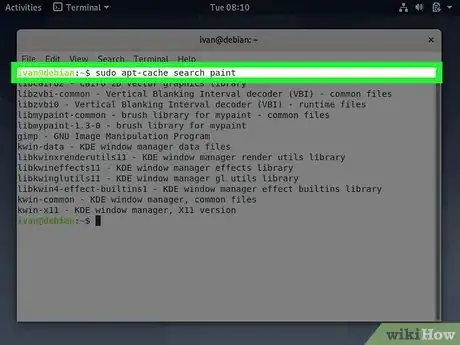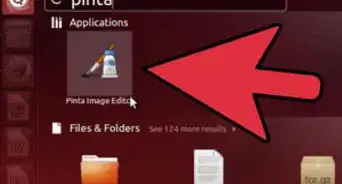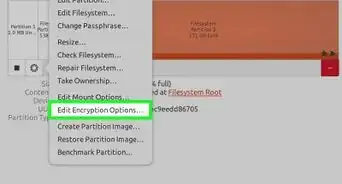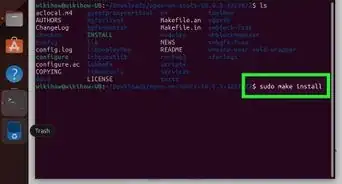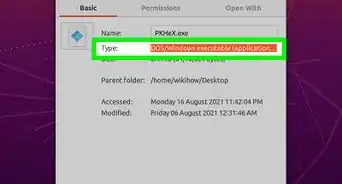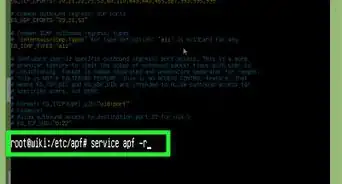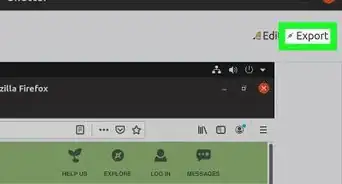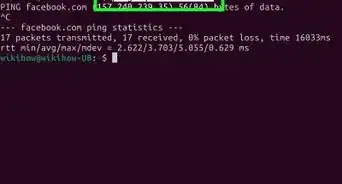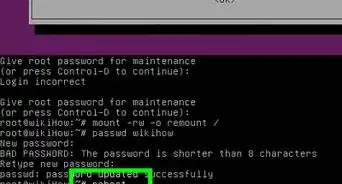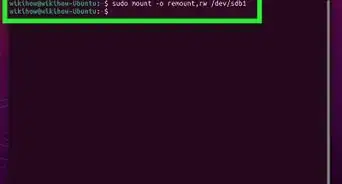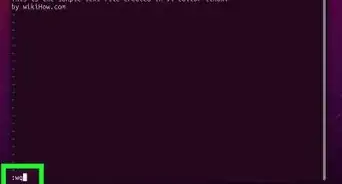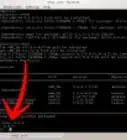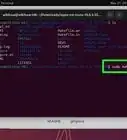This article was co-authored by wikiHow staff writer, Nicole Levine, MFA. Nicole Levine is a Technology Writer and Editor for wikiHow. She has more than 20 years of experience creating technical documentation and leading support teams at major web hosting and software companies. Nicole also holds an MFA in Creative Writing from Portland State University and teaches composition, fiction-writing, and zine-making at various institutions.
This article has been viewed 290,968 times.
Learn more...
This wikiHow teaches you how to use tools built into Debian Linux to install software packages. If you're using the desktop version of Debian, you can use Synaptic to install application packages with a point-and-click graphical interface. You can also use the apt command at the command line to search for and install packages from the internet. Finally, if you've downloaded a software package file that ends in *.deb, you can run dpkg to install it at the command line.
Steps
Using a Graphical Package Manager
-
1Open the Synaptic graphical package manager. Synaptic comes preinstalled in Debian as long as you've installed the version with desktop support.[1] You'll find it in your Applications menu, or under System > Administration. If you want to use a different graphical package manager, open that instead—most work similarly.
- You can also run Synaptic from the command line using sydo synaptic.
Tip: If you can't find any graphical package manager, consider installing one through the command line, for example, one of the following: KPackage, Klik, Autopackage, Bitnami, Click N Run.
-
2Click Search. It's the magnifying glass icon near the top of the window.Advertisement
-
3Search for the software you want to install. You can use the search bar to find something in particular or browse the list by category.
-
4Select the package(s) you want to install. Check the box next to the name of any package you want to install. You can install multiple packages at once if you wish.
-
5Click the Apply button. It's at the bottom of the window. Synaptic will now download and install the selected packages.
Using Apt
-
1Open a terminal. If you're using a graphical user interface (GUI), you can usually do this by clicking the terminal icon or by pressing Ctrl+Alt+T.
-
2Run sudo apt-get update to update the package manager. After typing that command at the prompt, press ↵ Enter or ⏎ Return to run it. After verifying your root password, the package manager will update to include the latest software sources.[2]
-
3Search for the package you want to install. If you already know the exact name of the package you want to install, skip to the next step. Otherwise, run apt-cache search softwareName (with softwareName being the name of your software) at the prompt.
- This can sometimes print out a lot of options, of which many are irrelevant. Be patient and read the description of every package to determine which one you want to install. If you're unsure, you can also use apt show packageName, with packageName being the name of any listed package, to get a longer description of what the package is.
- If you're unsure what your software is called, you might try searching for a word that describes what the package does. For example, typing apt-cache search paint will print the package names of many painting programs, including GIMP and Krita.
-
4Run sudo apt-get install packageName to install the package. Replace packageName with the actual package name. For example, if you want to install the package dillo (that's a web browser), you would type sudo apt-get install dillo.
- If additional dependencies are required for the package to install, follow the on-screen instructions to choose whether to install them now.
- To remove an installed package, use sudo apt-get remove packageName.[3]
Using Dpkg
-
1Download a package file. If you want to install a package that ends with the .deb file extension, you can use a built-in tool called dpkg.[4] Start by downloading the desired *.deb file from your preferred source.
-
2Open a terminal. If you're using a graphical user interface (GUI), you can usually do this by clicking the terminal icon or by pressing Ctrl+Alt+T.
-
3Use cd to enter the directory of the downloaded file. For example, if you've saved the file to a folder in your local directory called downloads, type cd downloads and press ↵ Enter or ⏎ Return.
-
4Run sudo dpkg –i packageName. Replace packageName with the full name of the package ending in .deb. This installs the software package.
- For example, to install a package called icewm_0.8.11-2.deb, type sudo dpkg –i icewm_0.8.11-2.deb and press ↵ Enter or ⏎ Return.
- Type your root password when prompted to complete the command.
Community Q&A
-
QuestionWhere do I find what I've installed?
 Community AnswerFor command line applications, you can use the `which` command. It will print the path of the executable. Just type your application name as argument. Examle: `which firefox`.
Community AnswerFor command line applications, you can use the `which` command. It will print the path of the executable. Just type your application name as argument. Examle: `which firefox`. -
QuestionHow do I download this terminal?
 SomoneCommunity AnswerThe terminal is built into all Linux Mint operating systems. If it's missing, then you may have a faulty OS.
SomoneCommunity AnswerThe terminal is built into all Linux Mint operating systems. If it's missing, then you may have a faulty OS. -
QuestionHow do I install the Audible app on Linux?
 PCI TechieCommunity AnswerWhile it isn’t made for Linux itself, many Windows programs (such as Audible) will run under W.I.N.E. Try installing PlayOnLinux onto your Linux installation, downloading the WINDOWS.EXE, and clicking “Install a Program” in PlayOnLinux. Click “Install an Unlisted Program” in the bottom left, then go to your downloads folder, click the .EXE, and install like normal.
PCI TechieCommunity AnswerWhile it isn’t made for Linux itself, many Windows programs (such as Audible) will run under W.I.N.E. Try installing PlayOnLinux onto your Linux installation, downloading the WINDOWS.EXE, and clicking “Install a Program” in PlayOnLinux. Click “Install an Unlisted Program” in the bottom left, then go to your downloads folder, click the .EXE, and install like normal.
References
About This Article
1. Open Synaptic.
2. Click Search.
3. Search for software.
4. Select a package to install.
5. Click Apply.







